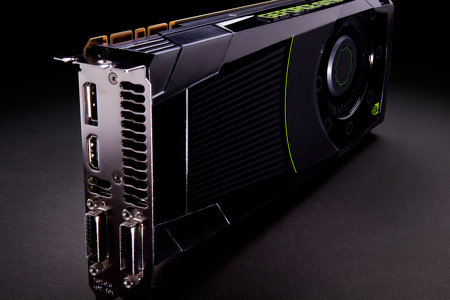
The Intel X79/SNB-E PCI Express 2.0 platform is only currently supported up to 5GT/s (PCIE 2.0) bus speeds even though some motherboard manufacturers have enabled higher 8GT/s speeds. The actual pixel fill rate is also dependant on quite a few other factors, especially the memory bandwidth - the lower the memory bandwidth is, the lower the potential to get to the max fill rate. GeForce GTX 680 supports PCI Express 3.0. ROPs (Raster Operations Pipelines - sometimes also referred to as Render Output Units) are responsible for drawing the pixels (image) on the screen. The number is calculated by multiplying the amount of Render Output Units by the the core speed of the card. Pixel Rate: Pixel rate is the maximum amount of pixels the video card could possibly write to its local memory in a second - measured in millions of pixels per second. It is measured in millions of texels processed in one second. The higher the texel rate, the better the graphics card will be at handling texture filtering (anisotropic filtering - AF). This number is calculated by multiplying the total amount of texture units of the card by the core clock speed of the chip. Texel Rate: Texel rate is the maximum texture map elements (texels) that can be applied per second. It especially helps with anti-aliasing, HDR and higher screen resolutions. The higher the bandwidth is, the faster the card will be in general. In the case of DDR type RAM, it must be multiplied by 2 again. The number is calculated by multiplying the card's bus width by the speed of its memory. Good news for Nvidia fans is that the company kept the identical memory system used on its GTX 680 card, meaning four 64-bit memory controllers (256-bit memory interface) and 2GB of GDDR5 memory.

For example, disabling “Windows Search” turns off the OS’ indexing which can at times utilize the hard drive and memory more than we’d like.Memory Bandwidth: Bandwidth is the max amount of data (in units of megabytes per second) that can be transferred across the external memory interface in one second. GIGABYTE GeForce GTX 680 (2GB DDR5) 2,704.00. This is due to the fact that these services have the tendency to start up in the background without notice, potentially causing inaccurate test results.
#Nvidia gtx 680 2gb ddr3 windows 7
To aide with the goal of keeping accurate and repeatable results, we alter certain services in Windows 7 from starting up at boot.

Interestingly, the HD 7970 overclocked at 1150/7000 MHz can equal the default GTX 680 in the Performance mode.

The card comes with massively improved performance per Watt. Take the old 680i, throw in PCI-E 2.0 support, and you get XFX's nForce 780. The new GeForce GTX 680 2GB shows its worth right from the first test, enjoying a 29-43 advantage over the GeForce GTX 580 3GB and beating the Radeon HD 7970 by 11-16 depending on the quality settings. NVIDIA GeForce GTX 650 Ti BOOST 2GB (GeForce 314.22) Today NVIDIA released their new GeForce GTX 680 which is based on the companys brand-new Kepler architecture. 3.0Gb/s 16MB Cache Hard Drive 4' NVlDlA GeForce' 9800 GT 512 MB DDR3 4' LG. NVIDIA GeForce GTX 650 Ti 1GB (GeForce 306.38) Vista Home Premium 2GB PC6400 B00 Memory it 25068 SATA150 Hard Drive. NVIDIA GeForce GT 640 1GB (GeForce 306.23) Intel Core i7-3960X – Six-Core, 4.20GHz, 1.35vĪMD Radeon HD 7770 1GHz Edition (Catalyst 12.9)ĪMD Radeon HD 7790 1GB (Catalyst March 13, 2013)ĪMD Radeon HD 7970 GHz Edition 3GB (Catalyst 13.4)
#Nvidia gtx 680 2gb ddr3 driver
Each card used for comparison is also listed here, along with the driver version used. The below table lists our testing machine’s hardware, which remains unchanged throughout all GPU testing, minus the graphics card. In an attempt to leave no question unanswered, this page contains not only our testbed specifications, but also a detailed look at how we conduct our testing. Our testing is rigorous and time-consuming, but we feel the effort is worth it. At Techgage, we strive to make sure our results are as accurate as possible.


 0 kommentar(er)
0 kommentar(er)
